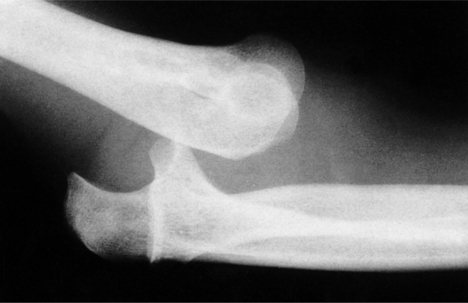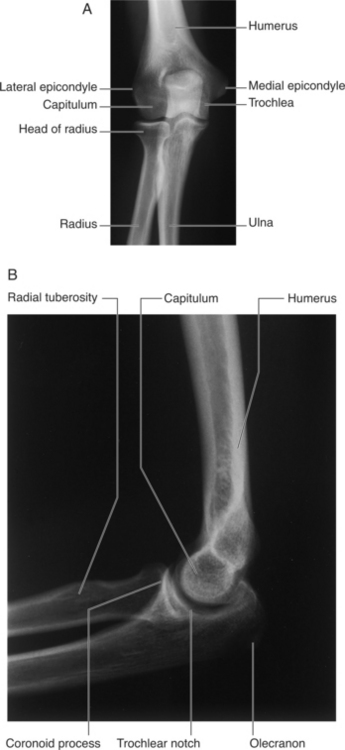CASE 44
A 55-year-old woman fell on an icy sidewalk. As she fell she caught herself with her outstretched right hand. As bystanders approached to assist, she complained of pain around her elbow joint. An ambulance was summoned to transport her to the emergency room where she was examined. Upon examination, there was swelling around the right elbow joint, and the forearm appeared shortened with a prominent olecranon. Neural assessment revealed a reduction in the strength of opposition of the right thumb and a reduction in sensation to the palmar surfaces of the lateral three and a half digits. Radiographs confirmed that the patient had suffered a dislocation of the elbow joint (Fig. 6-7). The dislocation was successfully reduced and the patient regained normal sensation and motor control of opposition.

FIGURE 6-7 Posterior dislocation of the elbow.
(Dandy D and Edwards D: Essential Orthopaedics and Trauma, 4e. Churchill Livingstone, 2003. Fig. 6.7B.)
WHAT LIGAMENTS ARE ASSOCIATED WITH THE ELBOW JOINT?
The elbow joint is classified as a hinge type of synovial joint. The joint is formed by two articulations (Fig. 6-8):

FIGURE 6-8 A, Anteroposterior radiograph of the elbow. B, Lateral radiograph of the elbow.
(Drake R, Vogl W and Mitchell A: Gray’s Anatomy for Students. Churchill Livingstone, 2004. Fig. 7-61B & 7.62B.)
The elbow articulation is composed of three ligaments (Fig. 6-9):
Stay updated, free articles. Join our Telegram channel

Full access? Get Clinical Tree



